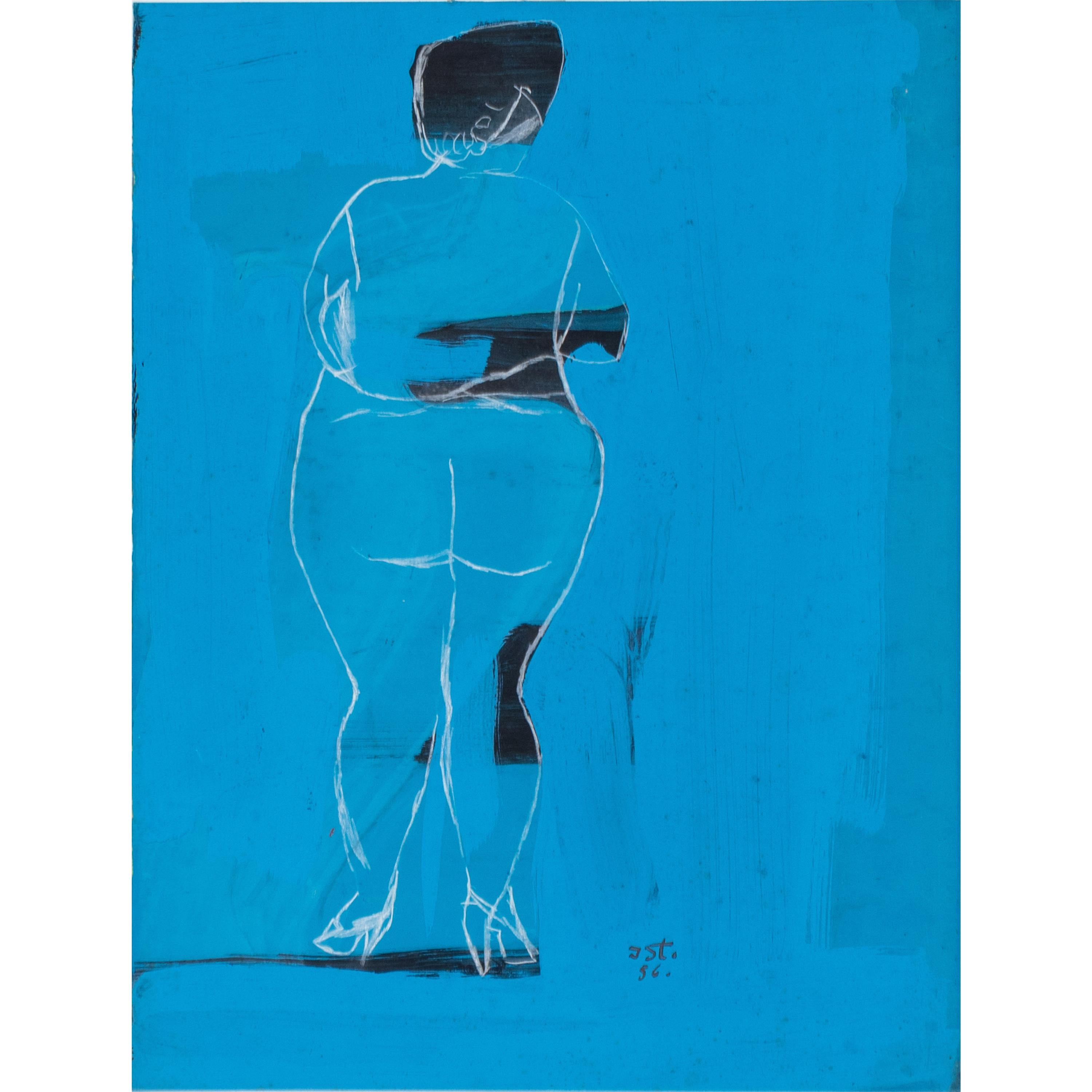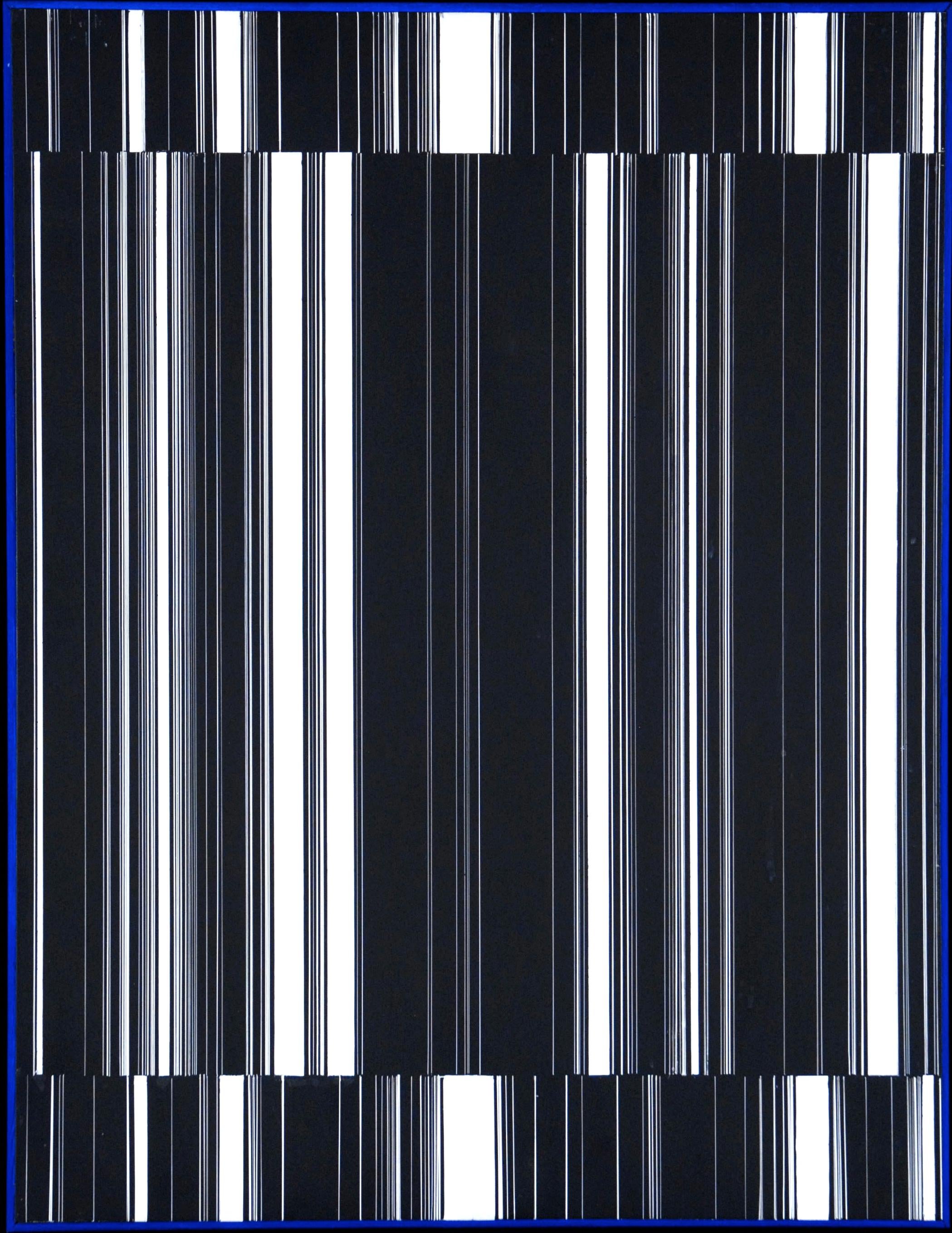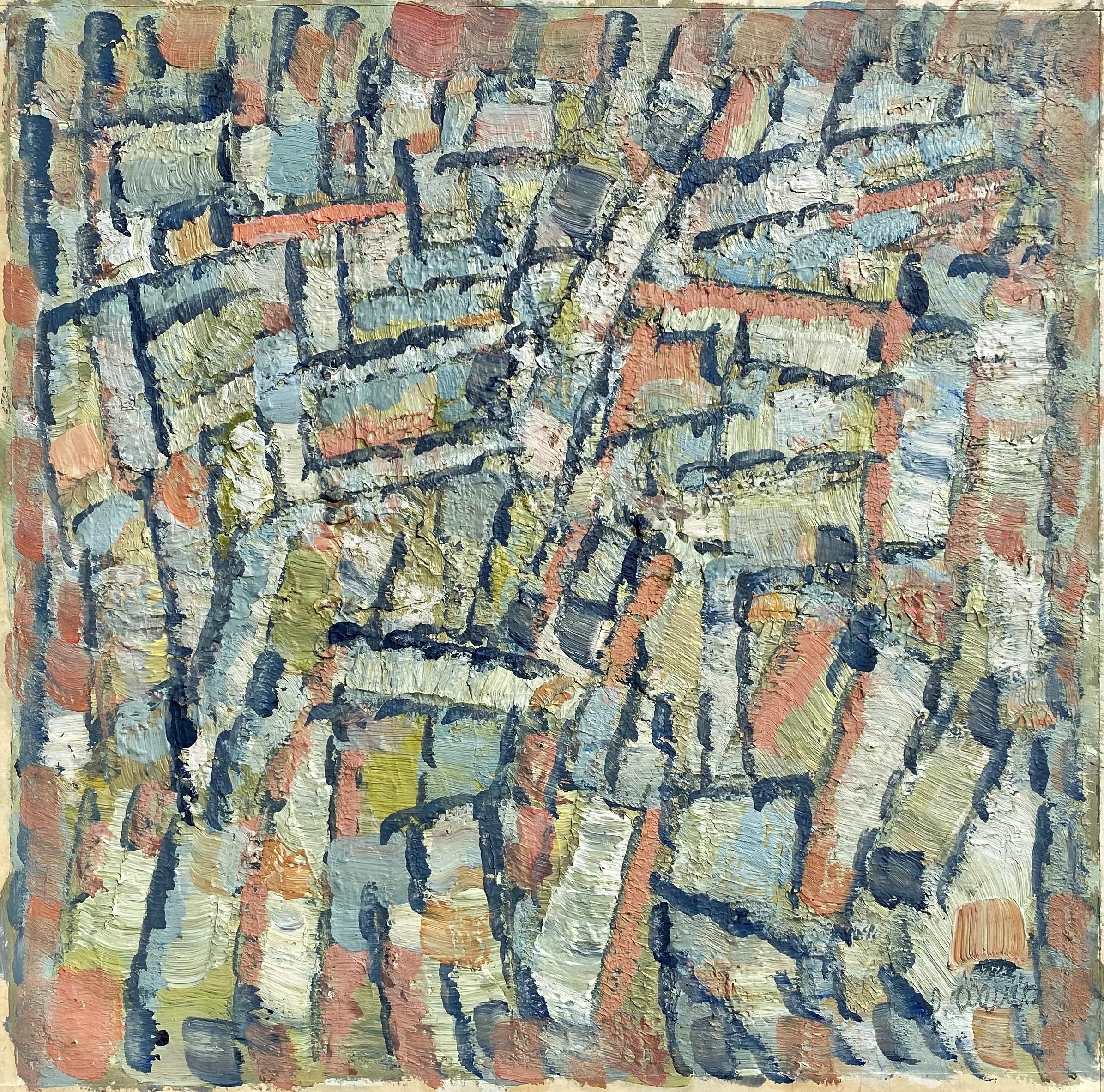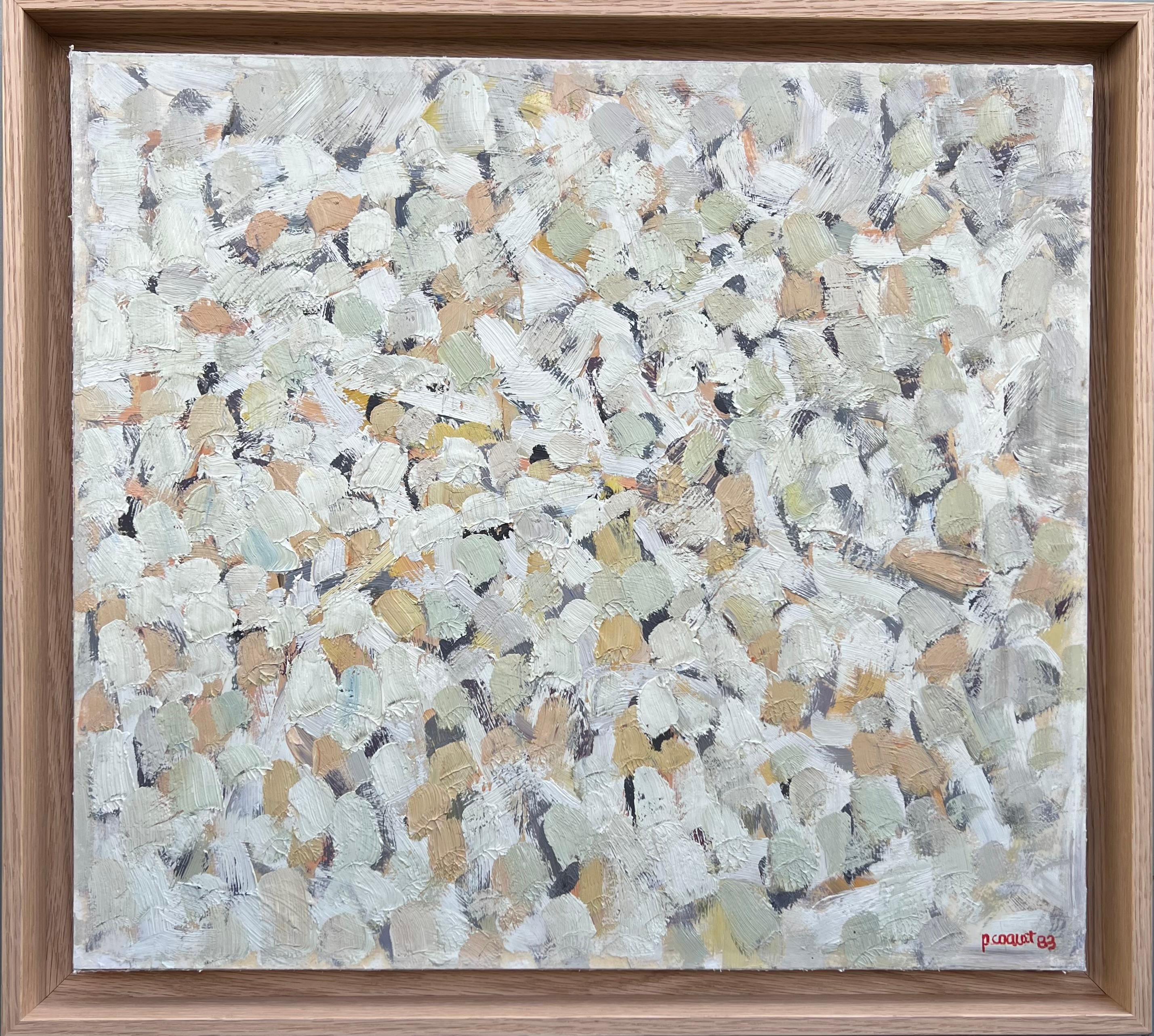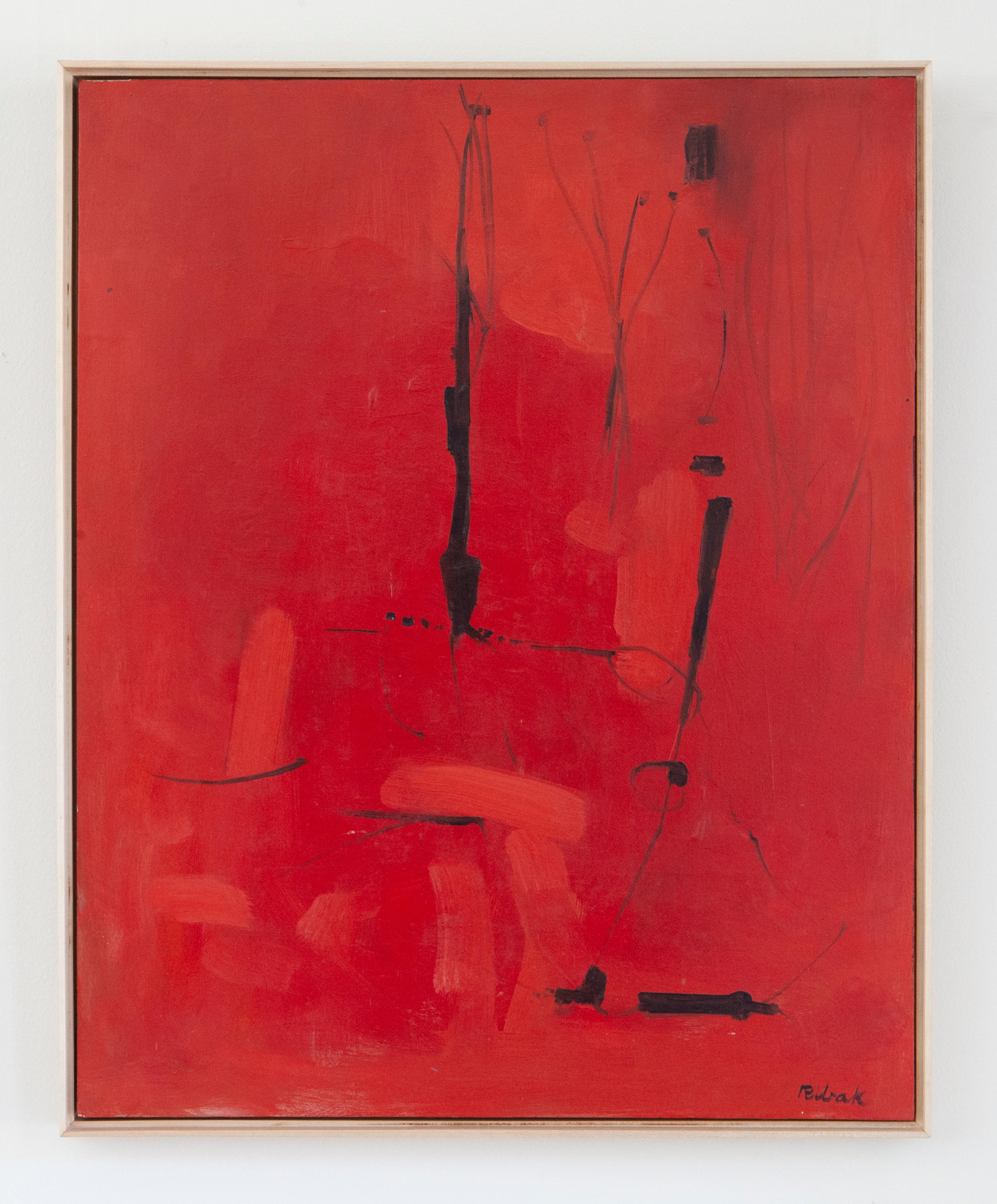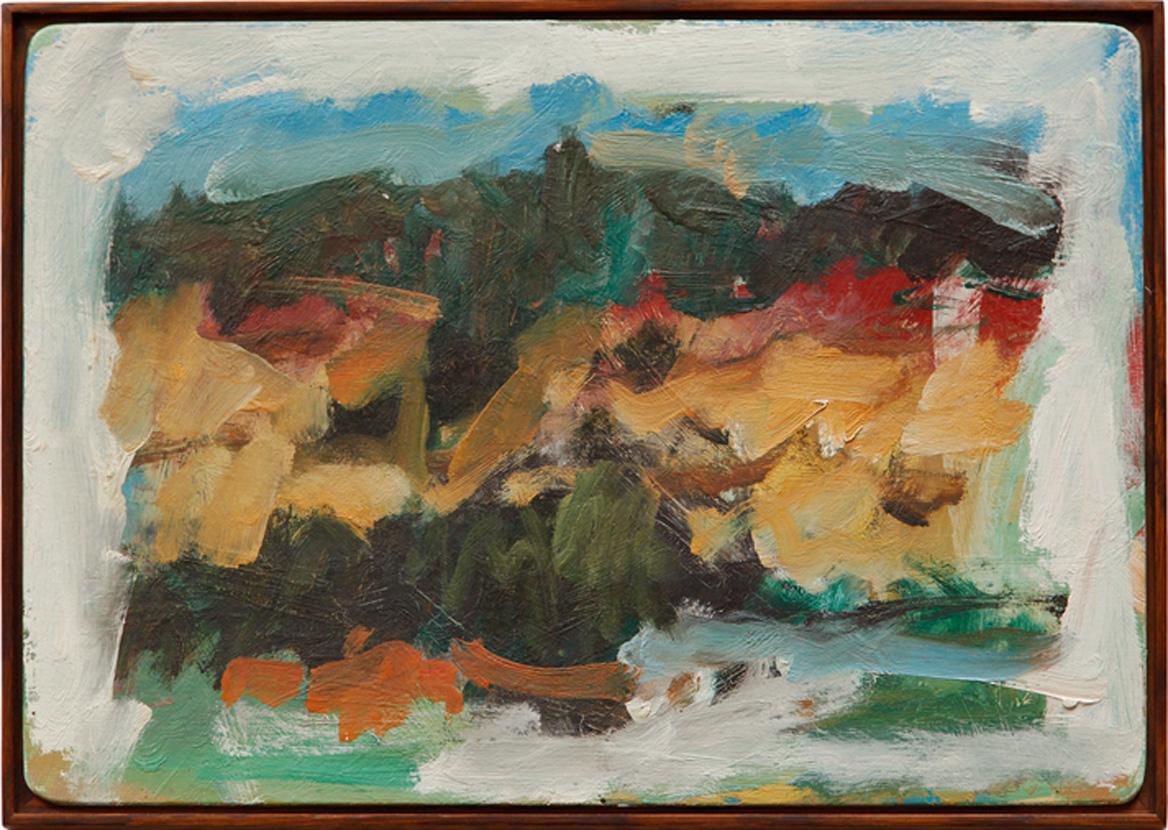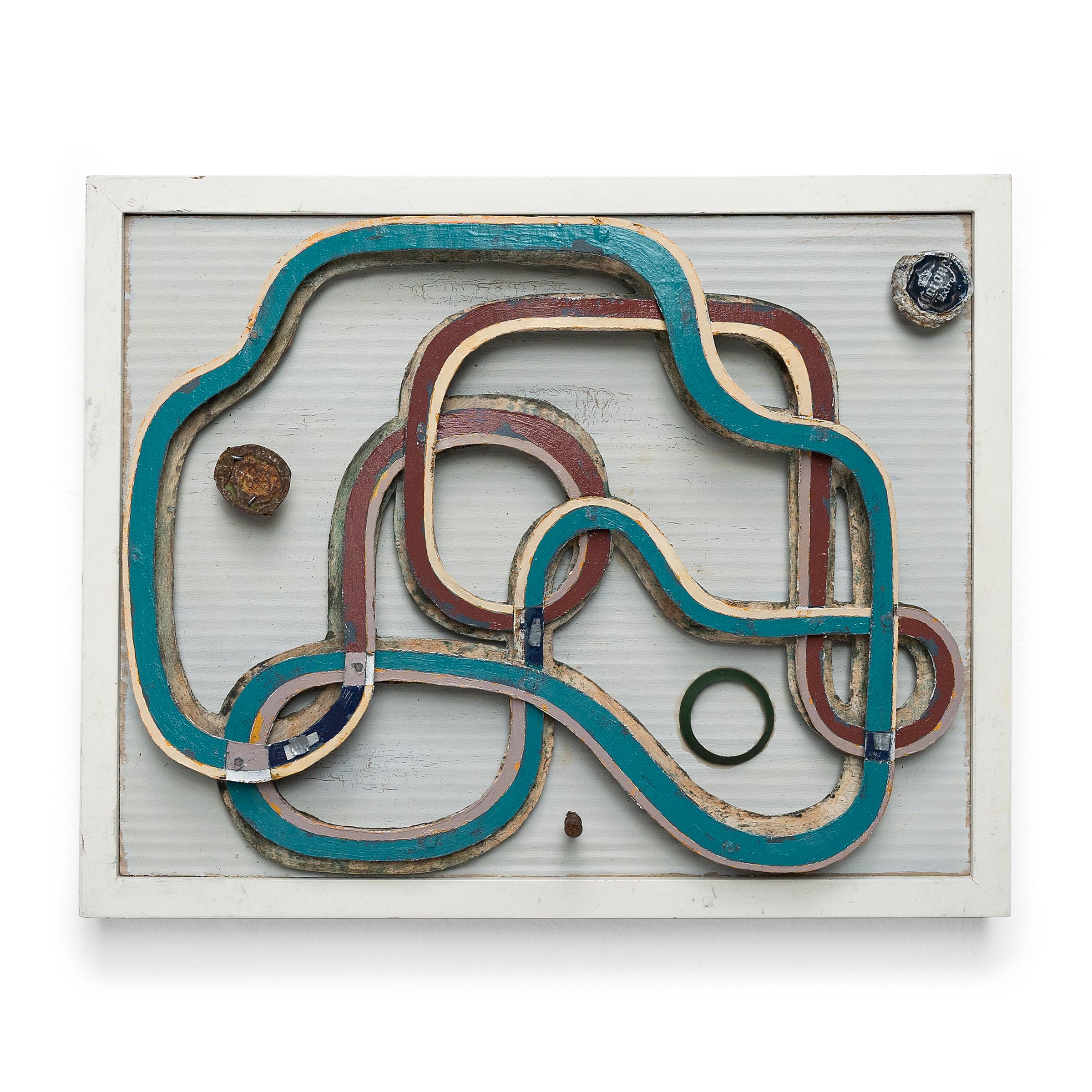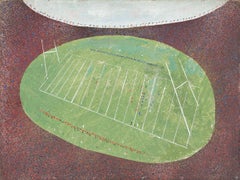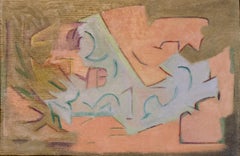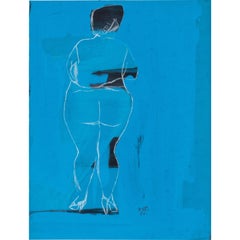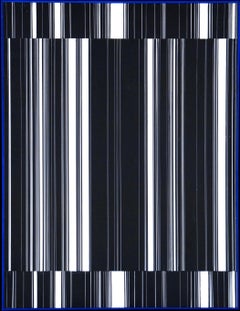"Opening (S50), " Ray Parker, Abstract Expressionism, Blue, New York School
View Similar Items
Want more images or videos?
Request additional images or videos from the seller
1 of 10
Raymond Parker"Opening (S50), " Ray Parker, Abstract Expressionism, Blue, New York School1950
1950
About the Item
- Creator:Raymond Parker (1922 - 1990, American)
- Creation Year:1950
- Dimensions:Height: 28 in (71.12 cm)Width: 17 in (43.18 cm)
- Medium:
- Period:
- Condition:
- Gallery Location:New York, NY
- Reference Number:1stDibs: LU1841211574602
About the Seller
5.0
Platinum Seller
These expertly vetted sellers are 1stDibs' most experienced sellers and are rated highest by our customers.
Established in 2021
1stDibs seller since 2022
60 sales on 1stDibs
Typical response time: 1 hour
More From This SellerView All
- "Tabac" Charles Green Shaw, Tobacco, Smoking, Park Ave Cubist, AAABy Charles Green ShawLocated in New York, NYCharles Green Shaw Tabac, circa 1935 Signed on the reverse Oil on canvasboard 5 3/4 x 8 3/4 inches Provenance: Washburn Gallery, New York, 1982 Private Collection (acquired from the above) Christie's, The Collector, October 20, 2021, Lot 307 Private Collection, Scarsdale, New York (acquired directly from the above) Literature: Hilton Kramer, "Charles Shaw: In the Minimal Tradition," New York Times, February 21, 1982, Section 2, p. 25. Charles Green Shaw was born in 1892 to a wealthy New York family. He lost both his parents at a very young age; his mother died when he was just three years old. Despite the early loss of his parents, Shaw lived the whimsical life of a New York socialite. As a beneficiary to an inheritance based in part upon the Woolworth fortune, he was brought up surrounded by the well-bred, well-groomed and well-moneyed citizens of New York’s elite social class. His social status as an adolescent was cultivated while spending summers in Newport and attending Christmas balls at Mrs. W.K. Vanderbilt’s. At age six, Shaw began to take an interest in drawing, and by nine, he was known to have a fondness for sketching historical costumes. After graduating from Yale University in 1914, Shaw spent a year studying at Columbia University’s School of Architecture. Subsequently he served for eighteen months as a Lieutenant in World War I. After his service, Shaw returned to New York and tried his hand as a businessman selling real estate, but his attempt was short lived. In the early 1920s, Shaw began his career as a journalist and novelist. He achieved professional success, writing consistently for magazines such as The New Yorker, Vanity Fair and The Smart Set. Shaw’s writing was a record of his approvals and disapprovals of the social crowd to which he belonged. His profession along with his social pedigree, brought him in contact with a number of the most significant figures of the 1920s such as, F. Scott Fitzgerald, Sinclair Lewis, George Gershwin, George Jean Nathan and the American artist George Luks. Some of his profiles included celebrity caricatures used as illustrations, these were the publics’ first look at Shaw’s artistic ability. In 1928, a collection of Shaw’s articles and interviews were published in one volume titled, The Low Down. Just previous to the stock market crash and the end of the Jazz Age, Shaw left New York and traveled to Paris and London. He arrived in Paris in 1929. In an autobiographical note Shaw suggests it was on this trip when he first began to paint seriously. London also acted as a great source of motivation for the budding artist. He began to sketch everyday in St. James’s Park, making large pastels of its vistas in the style of Cezanne. When he returned to New York in 1932, Shaw considered himself a painter. Success for Shaw came quickly with his first solo exhibition mounted at the Valentine Gallery in 1934. The following year Albert Eugene Gallatin included works by the artist in an unprecedented solo exhibition at his Gallery of Living Art at New York University. Shaw further cemented his reputation as an artist through his association and friendship with fellow abstract artists Morris and Gallatin. The trio soon was regarded as ‘the Park Avenue Cubists’. As a founding member of the American Abstract Artists, Shaw became an impassioned defender of the style. His 1938 essay in the American Abstract Artists yearbook, “A Word to the Objector”, acted as a defense against those who failed to see the illustrative quality of abstract art and scolded those who disregarded American artists as serious Abstractionists. He was also an influential force at the Museum of Modern Art, where he sat on the Advisory Board from 1936 to 1941. In the later years of Shaw’s life he continued to produce abstract paintings, yet in a more private manner. He was known to be a reserved man— a ‘gentleman’; not much is known about his personal life in these later years. During this time he maintained his career as a writer, publishing the well-known children’s book, It Looked Like Spilt Milk in 1940 and two books of poems in 1959 and 1962. In 1974, Shaw died...Category
1930s Cubist Landscape Paintings
MaterialsOil, Board
- "Harvard vs Yale" Charles Green Shaw, Football, Ivy League Sports, AbstractBy Charles Green ShawLocated in New York, NYCharles Green Shaw Harvard vs. Yale, 1944 Signed and dated on the reverse Oil on canvasboard 9 x 12 inches Provenance: Harvey and Francois Rambach, New Jersey Private Collection, California Washburn Gallery, New York D. Wigmore Fine Art, New York Private Collection, New York Charles Green Shaw, born into a wealthy New York family, began painting when he was in his mid-thirties. A 1914 graduate of Yale, Shaw also completed a year of architectural studies at Columbia University. During the 1920s Shaw enjoyed a successful career as a freelance writer for The New Yorker, Smart Set and Vanity Fair, chronicling the life of the theater and café society. In addition to penning insightful articles, Shaw was a poet, novelist and journalist. In 1927 he began to take a serious interest in art and attended Thomas Hart Benton's class at the Art Students League briefly in New York. He also studied privately with George Luks, who became a good friend. Once he had dedicated himself to non-traditional painting, Shaw's writing ability made him a potent defender of abstract art. After initial study with Benton and Luks, Shaw continued his artistic education in Paris by visiting numerous museums and galleries. From 1930 to 1932 Shaw's paintings evolved from a style imitative of Cubism to one directly inspired by it, though simplified and more purely geometric. Returning to the United States in 1933, Shaw began a series of abstracted cityscapes of skyscrapers he called Manhattan Motifs which evolved into his most famous works, the shaped canvases he called Plastic Polygons. The 1930s were productive years for Shaw. He showed his paintings in numerous group exhibitions, both in New York and abroad, and was also given several one-man exhibitions. Shaw had his first one-man exhibition at the Valentine Dudensing Gallery in New York in 1934, which included 25 Manhattan Motif paintings and 8 abstract works. In the spring of 1935 Shaw was introduced to Albert Gallatin and George L.K. Morris. Gallatin was so impressed with Shaw's work, he broke a policy against solo exhibitions at his museum, the Gallery of Living Art, and offered Shaw an exhibition there. In the summer of 1935 Shaw traveled to Paris with Gallatin and Morris who provided introductions to many great painters. Shaw regularly spent time with John Ferren and Jean Hélion. The following year Gallatin organized an exhibition called Five Contemporary American Concretionists at the Reinhardt Gallery that included Shaw, Ferren, and Morris, Alexander Calder, and Charles Biederman...Category
1940s Abstract Geometric Landscape Paintings
MaterialsOil, Board
$28,000 Sale Price20% OffFree Shipping - "Upper Street" Manierre Dawson, Cubism, Abstract Pastels, CityscapeBy Manierre DawsonLocated in New York, NYManierre Dawson Upper Street, 1912 Oil on board 10 x 15 inches Provenance: The artist Estate of the artist Private Collection (gift of Lillian Dawson, widow of the artist) Hollis Ta...Category
1910s Abstract Abstract Paintings
MaterialsOil, Board
- "Nature morte" Bela de Kristo, Mid-century Cubist Still Life Abstract CelloBy Bela De KristoLocated in New York, NYBela de Kristo Nature morte, circa 1956 Signed lower right Oil on board 19 5/8 x 11 3/4 inches Provenance: Alexander Kahan Fine Arts, New York Private ...Category
1950s Cubist Still-life Paintings
MaterialsOil, Board
- "Untitled, " Seymour Fogel, Geometric Abstraction, Texas Hard-EdgeBy Seymour FogelLocated in New York, NYSeymour Fogel Untitled Oil on illustration board construction 10 x 7 1/2 inches Provenance: Estate of the artist Charles and Faith McCracken Larry and Trish Heichel Private Collection Seymour Fogel was born in New York City on August 24, 1911. He studied at the Art Students League and at the National Academy of Design under George Bridgeman and Leon Kroll. When his formal studies were concluded in the early 1930s he served as an assistant to Diego Rivera who was then at work on his controversial Rockefeller Center mural. It was from Rivera that he learned the art of mural painting. Fogel was awarded several mural commissions during the 1930s by both the Works Progress Administration (WPA) and the Treasury Section of Fine Arts, among them his earliest murals at the Abraham Lincoln High School in Brooklyn, New York in 1936, a mural in the WPA Building at the 1939-1940 New York World's Fair, a highly controversial mural at the U.S. Post Office in Safford, Arizona (due to his focus on Apache culture) in 1941 and two murals in what was then the Social Security Building in Washington, D.C., also in 1941. Fogel's artistic circle at this time included Phillip Guston, Ben Shahn, Franz Kline, Rockwell Kent and Willem de Kooning. In 1946 Fogel accepted a teaching position at the University of Texas at Austin and became one of the founding artists of the Texas Modernist Movement. At this time he began to devote himself solely to abstract, non-representational art and executed what many consider to be the very first abstract mural in the State of Texas at the American National Bank in Austin in 1953. He pioneered the use of Ethyl Silicate as a mural medium. Other murals and public works of art done during this time (the late 1940s and 1950s) include the Baptist Student Center at the University of Texas (1949), the Petroleum Club in Houston (1951) and the First Christian Church, also in Houston (1956), whose innovative use of stained glass panels incorporated into the mural won Fogel a Silver Medal from the Architectural League of New York in 1958. Fogel relocated to the Connecticut-New York area in 1959. He continued the Abstract Expressionism he had begun exploring in Texas, and began experimenting with various texturing media for his paintings, the most enduring of which was sand. In 1966 he was awarded a mural at the U.S. Federal Building in Fort Worth, Texas. The work, entitled "The Challenge of Space", was a milestone in his artistic career and ushered in what has been termed the Transcendental/Atavistic period of his art, a style he pursued up to his death in 1984. Painted and raw wood sculpture...Category
Mid-20th Century Abstract Geometric Abstract Paintings
MaterialsOil, Board
$4,600 Sale Price20% Off - "Untitled, " William Baziotes, Black Modern Abstract Expressionism, SurrealismBy William BaziotesLocated in New York, NYWilliam Baziotes (1912 - 1963) Untitled, circa 1935-1940 Oil on board 14 x 19 3/4 inches Illegible Inscription present to the verso Provenance: Previously from the estate of Consta...Category
1930s Abstract Expressionist Abstract Paintings
MaterialsOil, Board
You May Also Like
- Josef Steiner (1899-1977), Abstract female nude, dated 1956By Josef SteinerLocated in Greding, DEAbstract female figure on a blue ground. Monogrammed and dated in the lower centre. Josef Steiner (1899 Munich - 1977 ibid.) lived through a Germany in all its facets as an artist. A...Category
20th Century Abstract Expressionist Nude Paintings
MaterialsOil, Cardboard
- Luc Peire "Graphie 2000", 1972By Luc PeireLocated in Washington, DCExceptional painting on laminate by Luc Peire, Belgian (1916-1994). Signed and dated on back, 1972. Titled "Graphie 2000". Included are two catalogues. Work measures 23.5" x 18".Category
1970s Modern Abstract Paintings
MaterialsOil, Board
$5,525 Sale Price35% Off - Committed to the Earth: Black and Pink Minimalist PaintingLocated in Petaluma, CAThis diptych painting of black and pink is slightly recessed within a black frame. The left side depicts simple marks using graphite pencil. The image on the right conveys a circul...Category
21st Century and Contemporary Abstract Abstract Paintings
MaterialsOil, Acrylic, Board
$3,520 Sale Price23% Off - Composition abstraite/Abstract compositionLocated in Montfort l’Amaury, FRReference number A7 Not framed but could be with a natural oak floated frame (add 100 euros) 36 x 36 cm This work is painted with oil on a board. Pierre was very sensitive to abstra...Category
1980s French School Abstract Paintings
MaterialsOil, Board
- Abstract Composition, oil painting by Pierre CoquetLocated in Montfort l’Amaury, FRPierre Coquet - Abstract Composition Reference number A1 Framed with a natural oak floated frame 70 x 55 cm frame included (65 x 50 cm without frame) Thi...Category
1990s French School Abstract Paintings
MaterialsOil, Board
- Abstract composition, oil painting by Pierre CoquetLocated in Montfort l’Amaury, FRPierre Coquet - Abstract Composition in white shades Reference number A202 Framed with a natural oak floated frame 40 x 45 cm (45 x 50 cm frame included) This work is painted with oi...Category
1980s French School Abstract Paintings
MaterialsOil, Board
Recently Viewed
View AllMore Ways To Browse
New York Estate
Gallery Opening
1950 New York City
Abstract Expressionism Framed
Abstract Expressionism Art Framed
Vintage Back To School
Framed Abstract Expressionism Paintings
New York City Large Framed
Simple Vintage Painting
Simple Vintage Paintings
Expressionism City
Blue Abstract Expressionism Painting
1950 Paintings Of New York City
Large Abstract Expressionism
Hunter New York
Abstract Volume
60s New York City
California Expressionism
